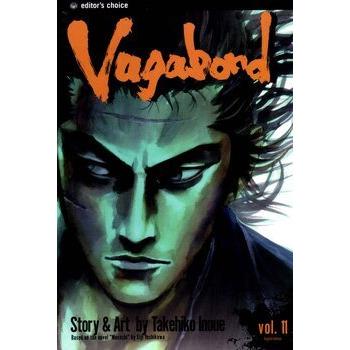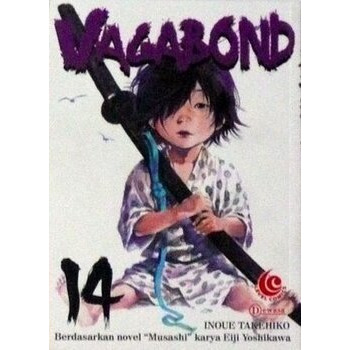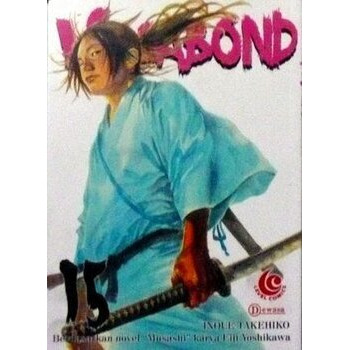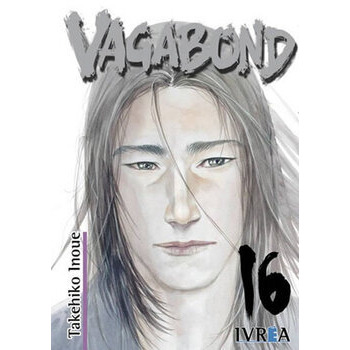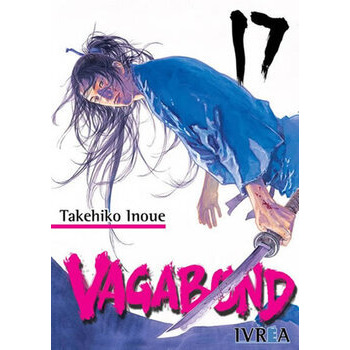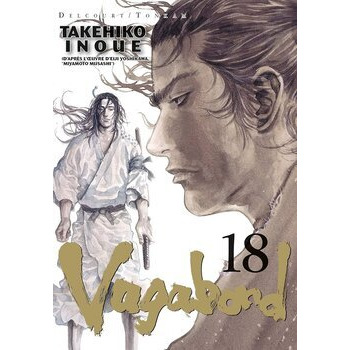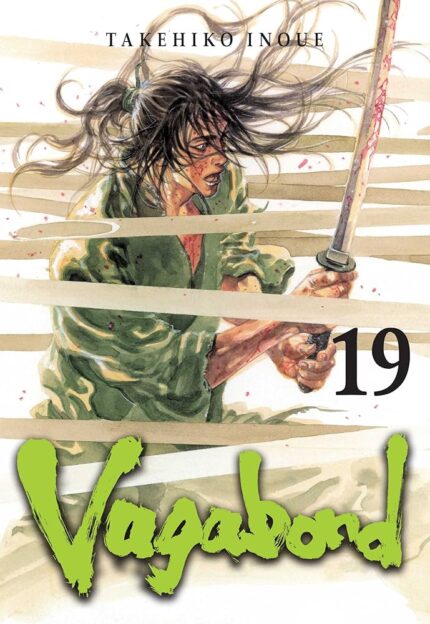Utilitarianism
Utilitarianism by John Stuart Mill is a foundational text in moral philosophy that advocates for the ethical theory of utilitarianism. Mill argues that the best actions are those that maximize happiness and minimize suffering, stating that the greatest good for the greatest number should guide moral decision-making. He expands on the ideas first presented by Jeremy Bentham, addressing criticisms of utilitarianism and refining the theory. Mill distinguishes between higher and lower pleasures, arguing that intellectual and moral pleasures are superior to physical ones. The work remains a key text in ethics, influencing discussions on morality, justice, and social welfare.
Vagabond, Vol. 1
Vagabond, Vol. 1 by Takehiko Inoue follows a young, impulsive Miyamoto Musashi after a brutal battle, as he begins his journey to becoming a master swordsman. This volume introduces his path of self-discovery, filled with intense action, philosophical reflections, and beautiful artwork, as Musashi confronts both external enemies and his inner struggles. The manga reimagines the life of the legendary samurai with a blend of history and fiction.
Vagabond, Vol. 10
Vagabond, Vol. 10 by Takehiko Inoue delves further into Miyamoto Musashi's journey, exploring the growing tension between him and Sasaki Kojiro, whose rivalry becomes a central focus. As Musashi continues to evolve as both a warrior and a person, he faces new challenges that test his beliefs and resolve. This volume emphasizes themes of self-discovery, the weight of violence, and the pursuit of mastery, all framed by Inoue's breathtaking artwork that captures the emotional and philosophical depth of Musashi's path. The complexity of Musashi's character deepens, making this volume a pivotal point in his quest for enlightenment.
Vagabond, Vol. 11
Vagabond, Vol. 11 by Takehiko Inoue intensifies the exploration of Miyamoto Musashi’s inner journey as he continues his path toward becoming the ultimate swordsman. This volume delves into Musashi’s confrontations with both physical and emotional obstacles, pushing him to reflect more deeply on his purpose and the consequences of his violent lifestyle. Themes of growth, the nature of combat, and self-awareness are central, while Inoue's stunning artwork brings the brutal yet beautiful world of the samurai to life. Musashi’s evolving rivalry with Sasaki Kojiro and the emotional stakes of their eventual encounter continue to shape his development.
Vagabond, Vol. 12
Vagabond, Vol. 12 by Takehiko Inoue further delves into the evolving journey of Miyamoto Musashi as he confronts both external enemies and his own inner struggles. As Musashi grows closer to his ultimate goal, his rivalry with Sasaki Kojiro intensifies, bringing him closer to a reckoning. This volume emphasizes themes of inner conflict, the cost of violence, and the nature of mastery. Inoue’s powerful artwork beautifully complements the philosophical depth of the story, portraying Musashi’s quest for meaning amidst a life of brutal combat and personal reflection.
Vagabond, Vol. 13
Vagabond, Vol. 13 by Takehiko Inoue continues the saga of Miyamoto Musashi as he moves closer to his ultimate confrontation with Sasaki Kojiro. This volume explores Musashi's increasing internal conflict and his struggle with his identity as a warrior. Themes of mortality, destiny, and the price of self-mastery are central as Musashi grapples with his past choices and the harsh realities of the path he's chosen. The stunning artwork and deep philosophical narrative continue to highlight the emotional and physical toll of Musashi's journey, pushing him toward a moment of profound self-awareness.
Vagabond, Vol. 14
Vagabond, Vol. 14 by Takehiko Inoue continues the exploration of Miyamoto Musashi's intense path toward self-realization and mastery. In this volume, Musashi confronts the consequences of his violent journey while reflecting on his past and the relationships that have shaped him. The rivalry with Sasaki Kojiro reaches new heights, and Musashi faces critical challenges that force him to question his ideals and what it means to truly be a warrior. Themes of solitude, inner growth, and the pursuit of wisdom are central, with Inoue's breathtaking artwork capturing the emotional weight and philosophical depth of Musashi’s story.
Vagabond, Vol. 15
Vagabond, Vol. 15 by Takehiko Inoue deepens Miyamoto Musashi's journey as he moves closer to his ultimate showdown with Sasaki Kojiro. This volume explores Musashi’s continued internal struggles with the violence of his past and the evolving nature of his path toward mastery. As he encounters new rivals and faces more personal revelations, Musashi is forced to confront the true cost of his quest. Themes of identity, fate, and self-doubt are explored against Inoue’s stunning, expressive artwork that heightens the emotional intensity of Musashi’s transformation and the weight of his choices.
Vagabond, Vol. 16
Vagabond, Vol. 16 by Takehiko Inoue follows Miyamoto Musashi as he continues to face both external challenges and his own inner turmoil. As his legendary duel with Sasaki Kojiro looms closer, Musashi reflects more deeply on the meaning of strength, honor, and self-mastery. This volume focuses on the growth and complexity of Musashi’s character as he wrestles with the consequences of his violent life. The themes of destiny, isolation, and personal transformation are explored with Inoue’s breathtaking artwork, capturing the raw emotion and philosophical depth of Musashi’s journey toward enlightenment.
Vagabond, Vol. 17
Vagabond, Vol. 17 by Takehiko Inoue continues to explore Miyamoto Musashi’s intense journey towards self-discovery and mastery. As Musashi approaches his fateful clash with Sasaki Kojiro, the volume delves deeper into his internal struggles, questioning the true nature of strength, purpose, and his place in the world. With his past catching up to him, Musashi is forced to confront the emotional and psychological toll of his path. The volume is filled with powerful action and introspection, with Inoue’s striking artwork further enhancing the emotional depth and philosophical richness of the story.
Vagabond, Vol. 18
Vagabond, Vol. 18 by Takehiko Inoue marks a pivotal point in Miyamoto Musashi’s journey as he faces the consequences of his relentless pursuit of mastery. As Musashi’s rivalry with Sasaki Kojiro builds toward its inevitable confrontation, this volume focuses heavily on Musashi’s personal evolution, exploring themes of redemption, inner peace, and the cost of violence. The emotional depth intensifies, and Musashi’s internal battles take center stage as he begins to question the very path he has chosen. Inoue’s stunning artwork captures the raw emotion and philosophical exploration of Musashi’s journey, making this volume a powerful moment in the series.
Vagabond, Vol. 19
Vagabond, Vol. 19 by Takehiko Inoue continues the deep philosophical and emotional exploration of Miyamoto Musashi's journey as he nears the end of his path toward self-mastery. This volume delves into Musashi’s internal reflections, highlighting his personal growth and the cost of his violent, wandering life. As his inevitable confrontation with Sasaki Kojiro draws nearer, Musashi is faced with profound realizations about the nature of strength, destiny, and peace. Inoue's breathtaking artwork adds to the intensity of the narrative, beautifully portraying the emotional and philosophical weight of Musashi's journey toward enlightenment and closure.




